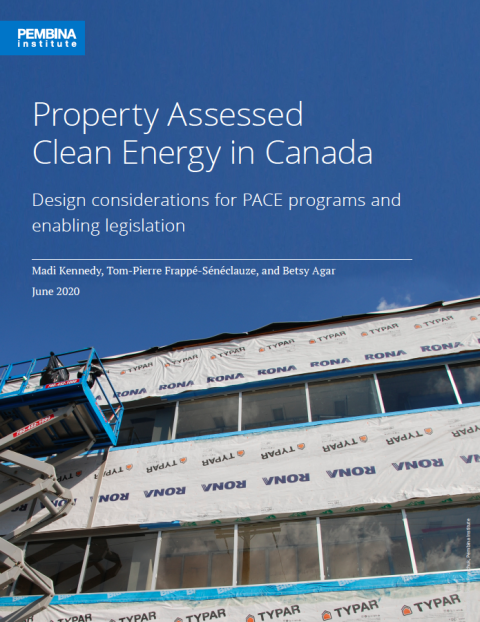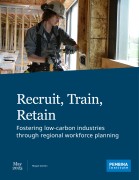To meet national climate targets and respond to federal and local climate emergency declarations, we will need to invest billions of dollars per year to retrofit existing buildings. Access to public and private financing at a large scale will be critical in achieving this goal. Based on U.S. examples, property assessed clean energy (PACE) financing has the potential to unlock private capital for building retrofits, resulting in energy and emissions reductions, more resilient buildings, economic development, and job creation.
Download the full report, or keep reading the executive summary below.
PACE is widespread in the U.S. but has not been implemented in Canada at the same scale. In most Canadian provinces, mechanisms are already in place to allow municipalities to recuperate the costs of public infrastructure upgrades (e.g. improved roads, sidewalks) by adding a local improvement charge to the property taxes of adjacent properties. However, changes in provincial legislation are generally required to authorize municipalities to use such mechanisms to finance upgrades to a private property (such as energy efficiency upgrades).
Based on existing literature and expert interviews, we recommend that provinces that do not yet have PACE-enabling legislation advance such legislation and ultimately harmonize their terms nationally. This provincial enabling legislation should clearly grant authority to local governments to implement PACE-enabling bylaws without being overly prescriptive, to allow for innovation and evolution over time. We recommend that provincial PACE-enabling legislation clearly state:
- The public benefits expected from PACE, including climate action, economic development, and equity
- Local government authority to establish PACE programs on a voluntary basis
- Eligible building types, which should include commercial, residential, industrial and agricultural — both existing and new buildings
- Qualifying measures, which should include energy efficiency, low-carbon energy retrofits, renewable energy, water conservation, climate adaptation, EV-charging, and seismic resiliency
- Funding is available for 100% of project hard and soft costs
- Assessments are transferable from one building owner to the next with sale
- Primary lien status only applies to the delinquent portion of the PACE assessment
- Repayment of the assessment shall not be accelerated automatically or extinguished, in the case of default of foreclosure
- Local governments must implement consumer protection measures in program design
- Programs can access project capital from as private and public sources
- Local government (or administrators) can impose fees to offset the administrative costs
- Contracts for program administrative services can be provided by a third party
- Residential PACE (R-PACE) and commercial PACE (C-PACE) programs are distinct and require different treatment
- PACE financing is not counted towards the municipal debt ceiling
We also recommend the following non-legislative measures be implemented by the federal government in partnership with the provinces:
- Implement a loan loss reserve fund that can be used to cover missed payments due to default.
- Support provinces and cities leading in PACE development, and coordinate research on best practices to facilitate national harmonization of programs, with input from local governments, industry, financial institutions, and utilities.









